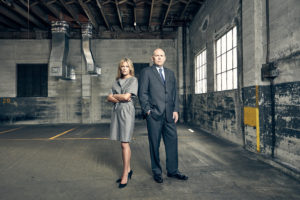
Rail car wheel cracking and fatigue can lead to significant product liability exposure and potential negligence claims. Unless specifically exempted by another statute or federal regulation, Oregon’s product liability statutes, starting at ORS 30.900, govern product liability actions in Oregon, including products such as railroad car wheels. This article will explore three important studies regarding rail wheel cracking and fatigue issues and will end by discussing critical product liability issues associated with rail wheels. In rail wheel cases, the phenomena commonly known as rolling contact fatigue (“RCF”) can lead to cracking and even the uncontrolled discharge of portions or rail car wheels. In extreme circumstances, the wheel itself may be subject to vertical cracking and disintegration.
Rail Car Wheel Cracking: Three Scientific Studies
There is a vast body peer-reviewed scientific literature that examines the relationship between various manufacturing processes, uses and stresses on railway wheels, and metal fatigue and cracking. This article explores three such scientific studies that focus on the susceptibility of railway wheels to wear and RCF damage. As explained in further detail below, studies have found that rail wheel damage is influenced by the properties of the wheel material, including steel composition and hardening techniques.
Below there are links to each study discussed. If, however, you cannot access the links and would like to review the studies, please contact Olson Brooksby.
The Molyneux-Berry, Davis, and Bevan Study
This study examined railway wheels on fleets from the UK and concluded that the materials that make up the wheels themselves influence the amount of wear and RCF damage that the wheels are subjected to. Factors that contribute to wheel damage are the composition of the steel, the process by which wheels are manufactured, and loading during operation.
This study can be found here: http://www.ncbi.nlm.nih.gov/pmc/articles/PMC3914578/
The Liu, Stratman, Mahadevan Study
This study developed a 3D “multiaxial fatigue life prediction model” to calculate the life of a rail car wheel and to assist with predictions regarding the timeline of its fatigue.
This study can be found here: http://yongming.faculty.asu.edu/paper/fatiwheels-ijf.pdf
The Peixoto and Ferreira Study
In this study, fatigue crack growth rate behavior tests were performed according to ASTM E647 (2008). The purpose of this study was to contribute to the development of accurate models that predict fatigue problems in rail car wheels in order to assist with maintenance and safety standards.
This study can be found here: http://www.deepdyve.com/lp/emerald-publishing/fatigue-crack-propagation-behavior-in-railway-steels-6SBquFt7Pn
Defenses to Rail Wheel Product Liability Claims
A common issue in rail wheel cases is the age of the wheel at issue and the amount of use it has received. When an older wheel is involved, defense counsel for the manufacturer should look first for a defense based on statute of ultimate repose. ORS 30.905 provides for a ten year statute of repose. If the plaintiff does not file a claim for personal injury or property damage within ten years from the date the product was first purchased for use or consumption, the claim is barred. Oregon has a strong statute of ultimate repose. There are no “useful safe life” or other exceptions or rebuttable presumptions codified in the statute that provides for an absolute ten years.
Absent an ability to obtain a complete dismissal under the statute of ultimate repose, the three studies discussed above illustrate the variety of causation factors and scientific models concerning rail car fatigue issues. Manufacturing materials and processes, steel fabrication techniques and materials for both wheels and rails, the nature of the loads, gradients, and cycles are all among the factors that provide fertile ground for defending rail wheel claims.